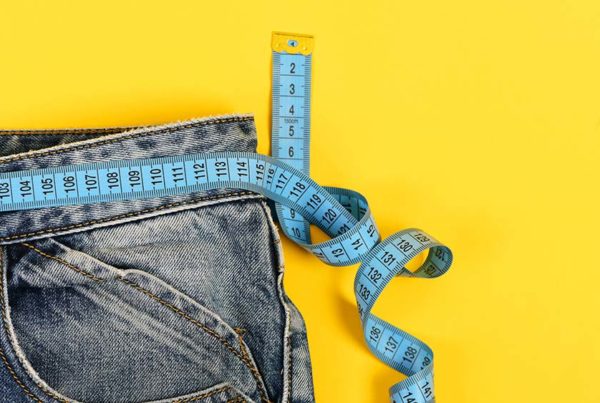In part 1 of this article, disordered eating was defined as the process of regularly consuming or avoiding foods that impair health and fitness. Those individuals in the subclinical category (as opposed to the more serious conditions of anorexia and bulimia) make this problem a significant one in athletes and inactive men, women and adolescents. Avoiding healthy foods, especially fat, protein and calories are common in those with disordered eating resulting in deficiencies in various macro- and micronutrients. This includes those on a “diet.” Disordered eating can result in significant impairment of overall human physical, chemical and mental-emotional performance.
An important component of disordered eating noted in part 1 was its relationship to behavioral lifestyle disorders. Beyond food, various other aspects of health and fitness may be part of the problem, including the common condition of overtraining.
Disordered Eating and Overtraining
These two serious conditions are frequently found together. While overtraining is associated with too much workout volume and or intensity, adequate recovery is required to avoid the condition, and this necessitates optimal nutrition.
Poor sleep quality may be another aspect of disordered eating, but it certainly can also impair recovery leading to overtraining.
Hormone imbalance is a very common problem in overtrained athletes from the earliest stage. The increased sympathetic training stress results in rising levels of cortisol, causing reductions in sex hormones, including the estrogens and testosterone in both men and women. These sex hormones are important for repair and recovery, especially for bones and muscles, and for the brain. In women, the menstrual cycle is disturbed, and both genders risk bone loss, osteoporosis, stress fractures, and muscle injuries. In addition, low thyroid and growth hormone is also possible.
This is the reason addressing disordered eating may also entail balancing fitness routines to avoid overtraining. For most athletes, reducing training volume and intensity can help allow health to improve. If one must include more workout time, walking is the perfect low-stress addition—not only can it help burn more body fat by building more aerobic function, it can improve health in many other ways.
What To Do?
The most common question I received about part 1 was this: What can I do about the problem? Of course, I don’t have a specific answer since everyone is an individual with unique needs. And there is no cookbook remedy. However, this article can be the start of healthy eating. There are also many other articles on this website about healthy foods, including recipes, and “Big Book of Health and Fitness” provides more details into practical and easy-to-implement information.
While I don’t want to oversimplify a remedy for the disorder, here is a starting point for many individuals:
- Recognize the full context of the problem. This means addressing other issues related to disordered eating. There might be a more primary condition—excess stress being a common one. Aspen et al (2014) states that, “Eating disordered symptomatology was strongly associated with anxiety disorders, mood disorders and insomnia. These co-morbidities (type and severity) tend to increase with eating disorder symptom severity.” Whether these are a cause or effect is difficult to say without a comprehensive evaluation, but based on my experiences with patients performing the Two-Week Test, the results of healthy dietary changes themselves often help anxiety, mood and sleep (to name just three conditions) in a significant way. This may be due to reducing the chemical imbalances in the brain (such as those associated with impaired blood sugar and imbalances in neurotransmitters).
- Decide to make healthy changes. This recommendation appears straightforward for most with subclinical disorders, not that it is always easy. Modifying lifestyle means learning what healthy eating is all about. This involves understanding that unprocessed/unrefined carbohydrates, fats and proteins are essential parts of a good diet, and fresh fruits and vegetables should make up a significant portion of food intake. It means avoiding junk food, especially refined carbohydrates, including sugar, eating smaller amounts of food more often, and avoid skipping meals. It might also mean a few days of sugar withdrawal—well worth the effort.
- Modify your lifestyle to improve physical, chemical and mental-emotional health and fitness. Going through this process provides a true holistic approach to eating disorders, one that not only can solve the problem but bring the individual to better overall health and on the road to reaching optimal human performance.
Having worked with thousands of patients who would be classified as having a subclinical eating disorder, this relatively simple 3-step approach can be very effective.
Researchers have also investigated how technology can be integrated into the treatment of disordered eating. Shingleton et al. (2013) reviewed how smart phones, Internet, CD-ROM and other technologies are used for self-help and follow up care in those with disordered eating.
Still, some people need additional help beyond learning about healthy eating. This may come in the form of a nutrition-oriented practitioner, a professional to assist with sports training, a family doctor or endocrinologist to help restore a normal menstrual cycle, and, if necessary, a practitioner in the field of psychology.
Overall, we are all in charge of our health and fitness—managing it should be a priority.
References:
Affenito SG, Backstrand JR, et al. 1997. Subclinical and Clinical Eating Disorders in IDDM Negatively Affect Metabolic Control. Diabetes Care; 20(2): 182-184.
Aspen V, et al. 2014. Psychiatric co-morbidity in women presenting across the continuum of disordered eating. Eat Behav;15(4):686-693.
Bonci CM, Bond LJ, Granger L R, et al. (2008). National athletic trainers’ association position statement: Preventing, detecting, and managing disordered eating in athletes. J Athl Train;43(1):80-108.
DePalma MT. 2002. Identifying college athletes at risk for pathogenic eating. Br J Sports Med;36:45-50.
Gonzalez MJ, Miranda-Massari JR. 2014. Diet and Stress. Psychiatr Clin North Am;37(4):579-589.
Martinsen M and Sundgot-Borgen J. (2013). Higher prevalence of eating disorders among adolescent elite athletes than controls. Med Sci Sports Exer;45(6): 1188-1197.
Morris MJ, Beilharz JE, Maniam J. 2014. Why is obesity such a problem in the 21st century? The intersection of palatable food, cues and reward pathways, stress, and cognition. Neurosci Biobehav Rev. 2014 Dec [Epub ahead of print]
National Eating Disorders Collaboration e-Bulletin (2014, Austrailia). http://www.nedc.com.au/files/enews/NEDC%20e-Bulletin%20February%202014.pdf
O’Connor DB, Armitage CJ, Ferguson E. Randomized Test of an Implementation Intention-Based Tool to Reduce Stress-Induced Eating. Ann Behav Med; 2014 Dec 11. [Epub ahead of print]
Shingleton RM, Richards LK, H. 2013. Using Technology Within the Treatment of Eating Disorders: A Clinical Practice Review. Psychotherapy (Chic);50(4):10.
Sundgot-Borgen J, Torstveit MK. 2010. Aspects of disordered eating continuum in elite high-intensity sports. Scand J Med Sci Sports;20 Suppl 2:112-21.








